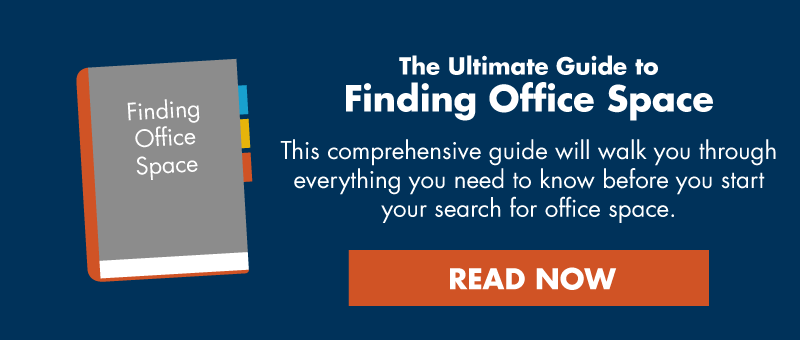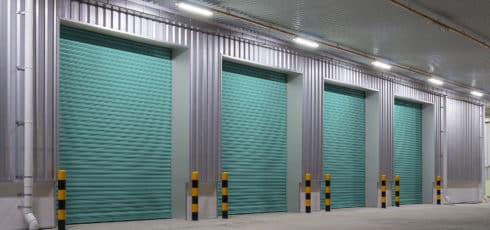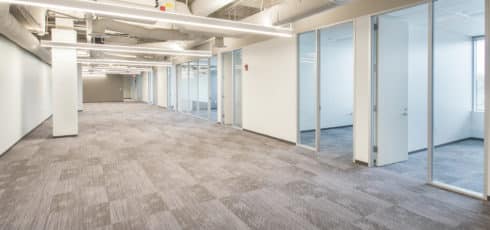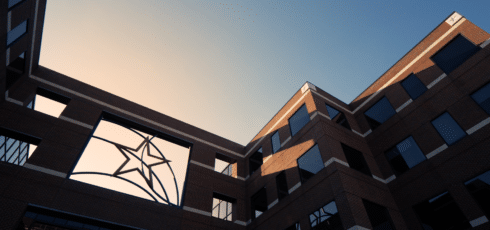At AQUILA, we’ve helped hundreds of clients find office space in and around Austin, Texas. When we begin the market survey and touring process, a common question we get is “What’s the difference in shell, second generation, and spec spaces?”
In this article, we will define each of these types of spaces and explain the benefits of leasing space in each condition.
Shell Space
What is Shell Space?
Shell space refers to a suite or floor within a building that has floor, walls, windows and a roof, but no interior improvements. It may also have some basic HVAC, plumbing, and electrical.
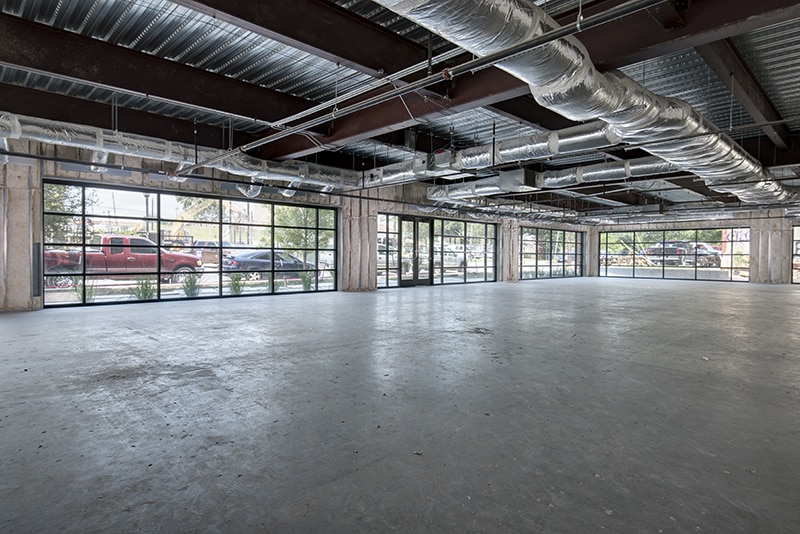
An typical example of what you can expect from shell space in a new development.
Shell condition space typically does not include:
- Demising walls
- Doors, frames, and hardware
- Ceilings
- Finishes including paint and flooring
- Millwork
- Mechanical Systems
- Electrical Power and Lighting
- Plumbing for restrooms and breakroom areas
Shell condition space is typically found in new construction, but can also be found in older buildings if the landlord has demoed an existing suite.
Cold Shell vs. Warm Shell
Cold shell and warm shell are two more technical terms you may hear your broker mention.
Warm shell space typically includes interior walls, electrical outlets, and wiring, sealed concrete floors, finished ceilings, lighting, and HVAC. Warm shell finish-outs are often referred to as “white box.”
Cold shell, on the other hand, is completely unfinished, with just exterior walls, bare floors, and exposed ceilings.
The Benefits of Shell Condition Build-Outs
Higher TI Allowance
From a cost perspective, a shell condition building has a large amount of work to be completed before moving in, and many of the improvements, such as floors, ceilings, HVAC, etc., will stay with the building far longer than you may occupy the space.
Because of this, it is common to see landlords offer higher tenant improvement allowances (TI’s) for shell space in comparison to second-generation space. (In other words, more money for you to complete your project!)
Read Next: What Are Typical Tenant Improvement Allowances in Austin, Texas?
Freedom to Design Your Own Space
Another more obvious, but noteworthy benefit of shell condition space is the freedom to configure the space without pre-existing walls and outdated finishes.
It is truly an empty canvas, and you are able to design as you wish.
Additionally, with the new trend toward creative office, with minimal dividing walls, open ceilings and exposed columns and floors, the money you may have put towards those elements can be put towards higher-end finish-outs and top-of-the-line furniture and amenities.
Although, if you plan on sticking within your TI allowance, there may be limitations on what you can put the money towards. For more on this read our article: What Is a Tenant Improvement Allowance and What Does It Cover?
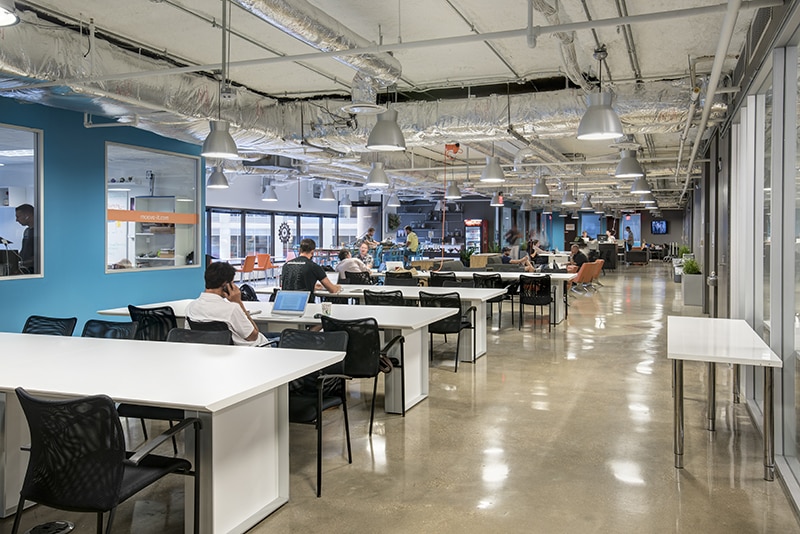
Open workspaces, exposed ceilings, and concrete floors are all a part of the creative office space trend.
Second Generation Space
Second-generation space, or “2nd gen,” is a space that has been built out with ceilings, walls, millwork, plumbing, HVAC, and more.
The space has been completely finished out by the previous tenant, although typically you will want to renovate to customize it to your specific needs.

An example of a typical 2nd generation space, including interior walls, electrical outlets, data drops, millwork, paint, carpet and more.
The Benefits of Second-Generation Build-Outs:
Lower Cost, Less Time
In contrast to a complete build-out of a shell building, 2nd gen may require significantly less work, and therefore cost much less to renovate. However, these spaces typically come with less tenant improvement allowance from the landlord. Thus, you might end up paying around the same amount out of pocket either way.
The true difference between the two lies in the timing.
Redeveloping a 2nd generation space buys you about three more months in comparison to shell build-outs (based on a 20,000-square-foot space with a Class A build-out scenario).
To learn more about how long you can expect your office renovation to take, read our article How Long Does It Take to Build Out or Renovate Office Space?
More Options in the Market
2nd Generation space is also much easier to find in the market, especially within the CBD and surrounding downtown area, because there is far more existing space than new space being delivered at any given time.
Because of the ample supply and quick turnaround, 2nd generation build-outs are great for time-sensitive moves.
Option to Take “As Is”
Because 2nd gen space has been occupied before, you can technically move in right away, without renovating.
This can be another way to save both time and money. By taking the space “as is” you can potentially receive a lower rental rate (because the landlord is saving on TI), and you can often occupy the space much sooner than you would if you had to renovate.
This is not typical, however, as usually you will want to at minimum replace the paint and carpet, and, in most cases, you will want to rework some of the interior layouts to best fit your workplace needs.
Spec Space
This is a suite similar to a 2nd gen space in that it is fully finished out and ready to occupy. However, with a spec suite the landlord has completed the build-out based on an assumption of what a tenant will want, and no one has actually occupied the space before you.
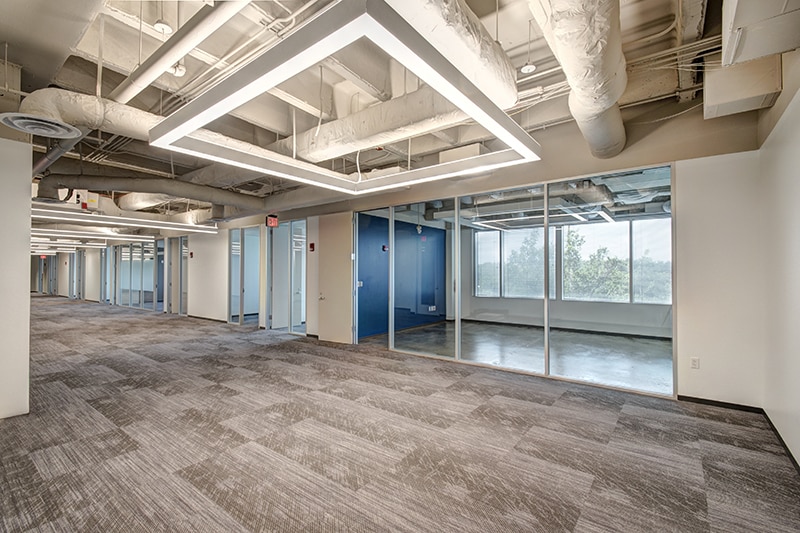
An example of a spec suite, where the ceiling has been intentionally left open for aesthetics.
Because the landlord has just spent the money to fully finish out the space, you will be unlikely to receive much or any TI allowance to make the space your own.
Spec space can be found in either new developments or existing buildings. A developer may choose to spec out unleased space in a new project, or an owner may choose to spend the money upfront to renovate a suite in an existing building in order to lease the space faster.
Benefits of Spec Suites
Move-In Ready
A spec suite will be in move-in-ready condition, meaning you could move in as soon as your lease is signed.
This can shorten your project timeline by a number of months, as there will be no need to build out the space.
To learn more about how long it typically takes to find an office space and build out to your needs, read our article When Should I Renew My Office Lease (Or Look to Relocate) Prior to My Lease Expiration?
No Need for Out-of-Pocket Renovations
Because the landlord typically designs the spec suite to meet current tenant demands, there’s a good chance that you’ll like the suite layout and design as is and you won’t need to pay for any renovations.
Some spec suites go so far as to come pre-furnished, which is becoming increasingly popular for tech companies and startups that don’t want to spend capital on office furniture.
Read Next: What Are Spec Suites? (Definition, Pros, and Cons for Tenants)
Hopefully, you now understand the three main conditions of office space you may run into while touring the market and the benefits of each.
To continue reading about finding and building-out office space, check out these five useful articles:
- How Long Does It Take to Build Out or Renovate Office Space?
- 5 Things That Affect the Cost of Your Office Build-Out
- How Much Does It Cost to Lease Office Space in Austin, Texas?
- 5 Crucial Steps for Finding the Perfect Office Space to Lease
- Commercial Property Classifications & Types of Office Spaces (Class A Office, Creative Office, etc.)
If you’re ready to start your search for office space, read our Ultimate Guide to Finding Office Space.
